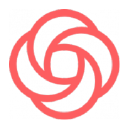On Starting An AI-Generated Marketing Business
Hello! I’m Anna — lovely to meet you. I’m the co-founder and CTO of Copysmith, a startup enabling users to drive growth through powerful and easily distributable artificial intelligence copy.
We enable users to generate more than forty different kinds of marketing content, ranging from google ads to landing pages to blog posts. Users can input minimal amounts of information (such as an audience, some keywords, and a product description) and receive generations of unique copies. We primarily serve eCommerce stores, creative agencies, freelancers, and enterprise marketing teams, who find our project and campaign-based interface particularly useful for content management. In essence: create all of the content you need to make your brand or campaign a success — a process that typically can take weeks, in just under an hour of your time.
In October 2020, we very successfully launched on Product Hunt, where we acquired our first 3000 users! Since then, we’ve expanded our team to bring on some truly exceptional people, and recently raised $10,000,000 in funding to flesh out the team and to accelerate our growth.

Download the report and join our email newsletter packed with business ideas and money-making opportunities, backed by real-life case studies.

Download the report and join our email newsletter packed with business ideas and money-making opportunities, backed by real-life case studies.

Download the report and join our email newsletter packed with business ideas and money-making opportunities, backed by real-life case studies.

Download the report and join our email newsletter packed with business ideas and money-making opportunities, backed by real-life case studies.

Download the report and join our email newsletter packed with business ideas and money-making opportunities, backed by real-life case studies.

Download the report and join our email newsletter packed with business ideas and money-making opportunities, backed by real-life case studies.

Download the report and join our email newsletter packed with business ideas and money-making opportunities, backed by real-life case studies.

Download the report and join our email newsletter packed with business ideas and money-making opportunities, backed by real-life case studies.














